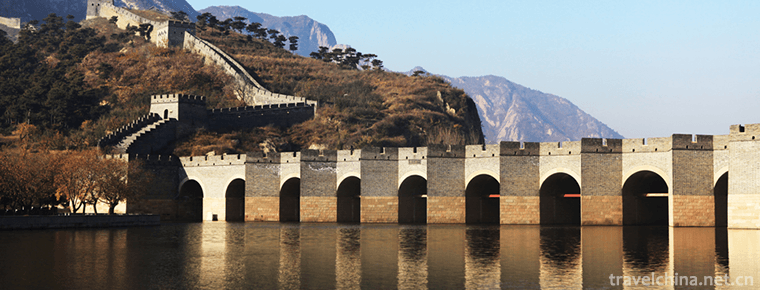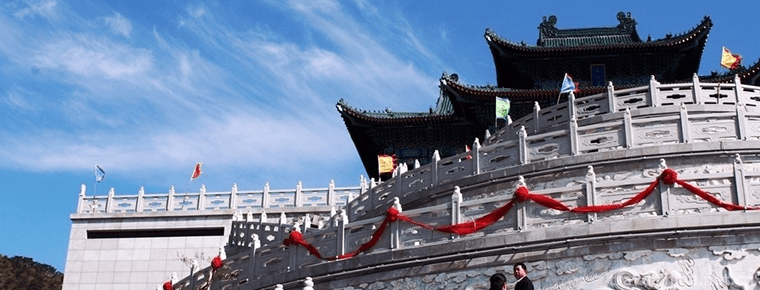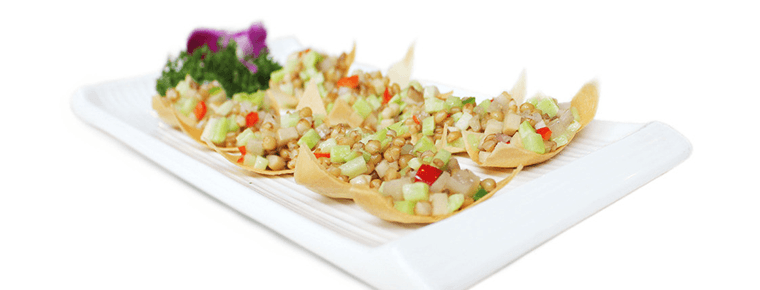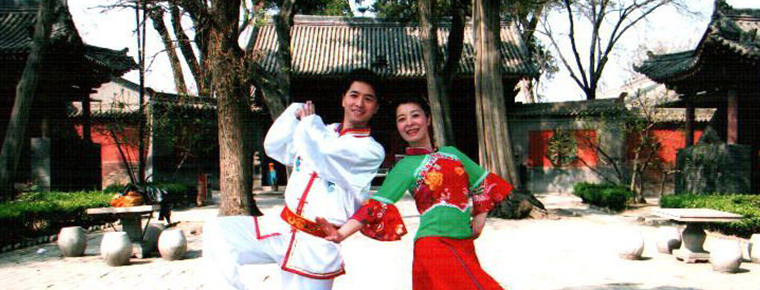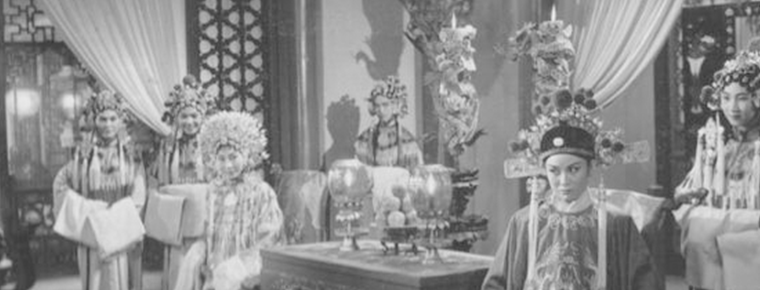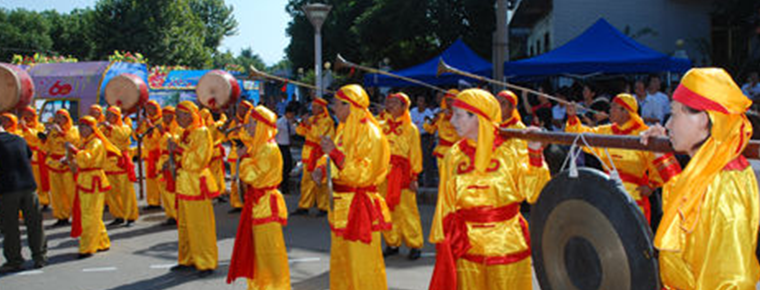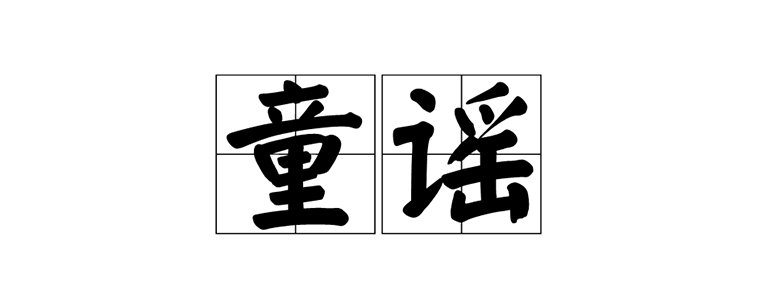Korean Crane Dance
Korean Crane Dance
Crane Dance of the Korean Nationality has a long history and is a unique dance performance form of the Korean Nationality in China. It has the national characteristics and the value of artistic research, has a very high reference value for the study of Korean dance in China, and has an important significance for enriching and improving the form of Chinese national dance.
Under the impact of modern culture, traditional culture is difficult to develop, professional performance opportunities are becoming less and less, and development is difficult. The talent who has the ability to perform and master the art of crane dancing is aging. The loss of backbone strength is serious. The old, middle, young and young talents are out of file, and the green and yellow are not connected. As a result, crane dancing is facing endangerment.
In June 2008, the Korean Crane Dance declared by Yanbian Korean Autonomous Prefecture of Jilin Province was listed in the second batch of national intangible cultural heritage list with the approval of the State Council. Heritage serial number: 655 III-58.
historical origin
Korean folk dance is formed on the basis of the traditional culture of ancient Korea, Fuyu, Koguryo and Sankorea. Chinese Korean folk dance, on the basis of Korean traditional culture, forms today's dance charm in the specific historical environment of Northeast China. To study Korean folk dance culture, we should understand the economic life, national psychology and the historical aspects of its ancestors, further study the evolution and development after becoming Korean, and analyze the cultural characteristics and remains of material and spiritual in various stages of development. Korean folk dance has become a high-level artistic form with Chinese national characteristics in a wide range of collections.
The Korean nation has a long tradition of music and dance, which has a profound historical accumulation and cultural connotation. Therefore, whether in the Tang, Song Dynasty or after the cultural input, they can absorb foreign forms of music and dance extensively, maintain their own cultural tradition and make it develop continuously. Because of the mutual influence between the "music and dance" of the court and the "folk music", the national color of folk dance has been enhanced correspondingly, and the ancient custom of singing and dancing is still prevalent.
The rhythm of Korean folk dance, the embodiment of crane's mentality in folk dance, is the integration of inherent beauty and dance posture beauty of the Korean nation. It is the result of the coordination and sublimation of the unique rhythm form and breathing method to show their mentality and charm of worshiping cranes. In Korean folk dances, the material factors that simulate the natural form of cranes are "Hebu" and "Hefei" dancing images. Stilts seem to have nothing to do with cranes and Korean folk dances, but in the book Gaogouli Culture, there are acrobatic portraits of stilts on the murals of opera figures in the ancient graves of Baqingli and Shuishan, which is a visual simulation of the ancient Korean crane totem worship.
artistic characteristics
The Korean Crane Dance was originally an interlude performance form of the large-scale court song and dance "Five Prescriptions Dance". During the Li Dynasty, there were new changes in the performance of crane dance: two cranes danced around two lotus flowers and became an independent "Heli Lotus Dance". Crane Dance has been introduced into China for a hundred years. It has been processed and reorganized by folk artists to make it more perfect and popular among the people. At the beginning of liberation, it was popularized in all counties and cities in Yanbian area, and at present it is the most widely popularized in Antu.
Under the beautiful Changbai Mountain, the white and elegant crane is the symbol of auspiciousness, purity and longevity in the hearts of the Korean people. Its graceful form and beautiful characteristics vividly reflect the Korean folk dance, thus forming a dynamic and static combination, relaxed, free and flowing, graceful and graceful dance features, "crane foot" and "crane flying" are common dance images of the Korean nationality. Korean experts once described their own national dance in this way: crane-like pace and willow-like body, this summary is very accurate and refined.
The Crane Dance mainly simulates the crane's leisurely movements, such as neck-lifting, pecking and arm-swinging, to show the Korean people's spiritual belief in revering cranes and their pursuit of goodness and beauty. It is the only bird masquerade dance in Korean folk dance. The movement is marked by the imitation of crane characteristics. It is simple, gentle and stretching. It is a special form of artistic performance, which is obviously different from other Korean dances.
Inheritance and protection
In 1952, Jin Zaoshan, the first generation inheritor of crane dance, performed the "crane dance" at the amateur literary performance of farmers in Wanbao Town (now Wanbao Town). In the 1980s, the "crane dance" was spread through the excavation and arrangement of literary and artistic workers. In 1989, the Antu County delegation performed the "crane dance" and won the first prize in the whole state literary and artistic performance. In 1997, the "crane dance" was earned by the government. "Chinese Korean Dance Integration" edited by the Ministry of Family Culture.
"Crane Dance" has a high artistic and ornamental quality. Antu County, aiming at the lack of professionals and the low level of relevant theoretical research, allocated special funds to establish a performance base, set up a Korean art training center, and put "Crane Dance" as the focus of training content. At the same time, the intangible cultural heritage at the national level has been declared.
In the future, Antu County will also set up a dance troupe with "Crane Dance" as its main content in the tourist attractions, and build a folk culture system with the focus on Crane Dance, so as to make the folk cultural heritage art of this nationality develop continuously.
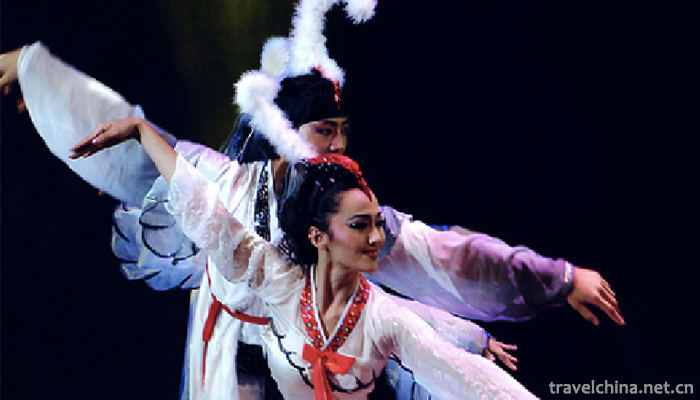
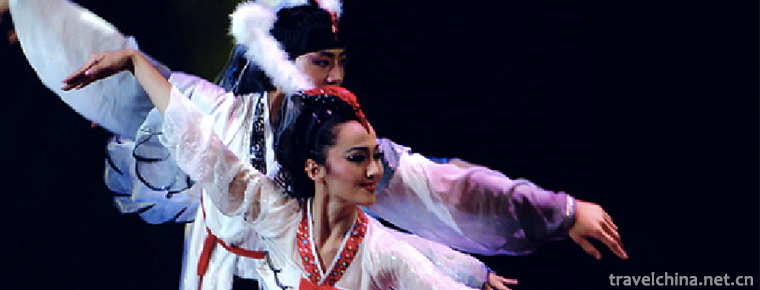
Korean Crane Dance
-
JiuMenKou Great Wall
Views: 210 Time 2018-12-22 -
Xianguding Scenic Spot
Xianguding, located in the south of Huancui District, Weihai City, is only five kilometers away from the city centre. It is the highest peak in the Northwest Mountain of Wangdao, with an elevation of
Views: 141 Time 2018-12-22 -
Sea cucumber with eight treasures
Babao sea cucumber is a traditional dish in Yichang City, Hubei Province. "Babao" means ham, hoof tendons, chicken, winter bamboo shoots, shrimp, mushrooms, lotus seeds and water chestnut; i
Views: 176 Time 2019-03-25 -
Hancheng Yangko
Hancheng Yangko, commonly known as "singing Yangko", is a form of singing that integrates folk songs, rap and dance, and derives from traditional opera
Views: 329 Time 2019-05-02 -
Huangmei Opera
Huangmei Opera, formerly known as Huangmei Diao and Tea Picking Opera, originated from Huangmei Opera in Hubei Province and grew stronger than Anqing Opera in Anhui Province.
Views: 167 Time 2019-05-04 -
Shengzhou Blows
Shengzhou blowing is one of the main components of "gong and drum in eastern Zhejiang". "Zhedong Gong and drum" generally refers to the traditional folk instrumental music in easte
Views: 182 Time 2019-06-14 -
Nursery rhyme
Nursery rhymes are short poems written for children, emphasizing rhythm and rhyme. They are usually spread orally. Many nursery rhymes are processed and spread according to the idioms in ancient ritua
Views: 168 Time 2019-06-23 -
Linear cavity
Line-tune opera, also known as Line-score opera, is an ancient traditional opera in Shanxi Province. It first appeared in the Han and Tang Dynasties, and developed greatly. It flourished in the Song D
Views: 169 Time 2019-07-03 -
Chunqiu Temple
Chunqiu temple, also known as Chunqiu pool and Chunqiu Pavilion, is located in Yandian street, Xuyong county (Xuyong town), Luzhou City, Sichuan Province. It is mainly dedicated to Guan Sheng emperor. It is said that Guan Yu likes to read the biography of the left family in the spring and Autumn period, so it is named Chunqiu temple.
Views: 249 Time 2020-10-15 -
Neijiang geographical environment
Neijiang City is mainly hilly, surrounded by low mountains in the southeast and southwest. About 90% of the hills are between 350 and 450 meters above sea level. The geological structure is a part of the Neocathaysian subsidence zone with small fold fault scale
Views: 116 Time 2020-12-16 -
Neijiang climate
Neijiang City belongs to subtropical humid monsoon climate. Affected by the basin and the natural environment, it has the characteristics of mild climate, abundant rainfall, sufficient light and heat, and long frost free period. It is warm in winter and hot in summer,
Views: 308 Time 2020-12-16 -
Meishan water resources
There are 27887 water conservancy projects in Meishan City; there are 15 rivers with a drainage area of more than 100 square kilometers. Among them, Minjiang River flows through Pengshan, Meishan and Qingshen counties from north to south, with an internal flow length
Views: 336 Time 2020-12-18
